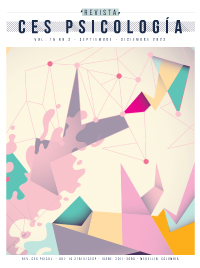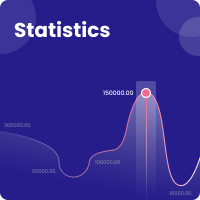Seeking and finding purpose in life in adolescence: Development and validation of a scale for its assessment
DOI:
https://doi.org/10.21615/cesp.6846Keywords:
purpose in life, adolescence, positive development, scale, life purpose scale for adolescentsAbstract
The aim of this study is to present the development and validation process of a scale to evaluate seeking and finding purpose in life (PL) for its use with adolescents in urban areas of Argentina. A total of 554 adolescents (13 to 19 years old and of both sexes) from schools in the Buenos Aires Metropolitan Area (AMBA) participated. The development and validation process were carried out through three studies. In the first study, the scale was developed (named Life Purpose Scale for Adolescents), content validity was studied, and its internal structure was analyzed through exploratory factor analysis. In the second study, this structure was confirmed by means of confirmatory factor analysis. In the third study, to obtain additional evidence in favor of construct validity, the relationship between seeking PL and finding PL was investigated, studying the formation of profiles (cluster analysis) and examining the association between PL and self-concept clarity. The results show that the Life Purpose Scale for Adolescents has adequate content, factor and construct validity, and satisfactory internal consistency.
Downloads
References
Abramoski, K., Pierce, J., Hauck, C., & Stoddard, A. (2018). Variations in adolescent purpose in life and their association with lifetime substance use. Journal of School Nursing, 34(2), 114–120. https://doi.org/10.1177/1059840517696964
Asociación Médica Mundial [AMM]. (2000). Declaración de Helsinki: Principios éticos para las investigaciones médicas en seres humanos. Helsinki: Asociación Médica Mundial. https://www.wma.net/es/policies-post/declaracion-de-helsinki-de-la-amm-principios-eticos-para-las-investigaciones-medicas-en-seres-humanos/
Ato, M., López, J. J., & Benavente, A. (2013). Un sistema de clasificación de los diseños de investigación en psicología [A classification system for research designs in psychology]. Anales de Psicología, 29(3), 1038–1059. http://dx.doi.org/10.6018/analesps.29.3.178511
Bronk, K. C. (2014). Purpose in life. A critical componente of optimal youth development (1st ed.). Springer. https://doi.org/10.1007/978-94-007-7491-9
Bronk, K. C., Riches, B. R., & Mangan, S. A. (2018). Claremont Purpose Scale: A measure that assesses the three dimensions of purpose among adolescents. Research in Human Development, 15(2), 101–117. https://doi.org/10.1080/15427609.2018.1441577
Brown, T. A. (2015). Confirmatory factor analysis for applied research. In The American Statistician (2nd ed.). The Guilford Press.
Bundick, M., Andrews, M., Jones, A., Mariano, J. M., Bronk, K. C., & Damon, W. (2006). Revised youth purpose survey. Documento inédito, Stanford Center on Adolescence.
Burrow, A. L., O’Dell, A. C., & Hill, P. L. (2010). Profiles of a developmental asset: Youth purpose as a context for hope and well-being. Journal of Youth and Adolescence, 39(11), 1265–1273. https://doi.org/10.1007/s10964-009-9481-1
Campbell, J. D., Trapnell, P. D., Heine, S. J., Katz, I. M., Lavallee, L. F., & Lehman, D. R. (1996). Self-concept clarity: Measurement, personality correlates, and cultural boundaries. Journal of Personality and Social Psychology, 70(1), 141–156. https://doi.org/10.1037/0022-3514.70.1.141
Chen, H.-Y., & Cheng, C.-L. (2020). Developmental trajectory of purpose identification during adolescence: Links to life satisfaction and depressive symptoms. Journal of Adolescence, 80, 10–18. https://doi.org/10.1016/j.adolescence.2020.01.013
Cohen, J. (1992). A power primer. Psychological Bulletin, 112(1), 155–159. https://doi.org/10.1037/0033-2909.112.1.155
Crumbaugh, J. C., & Maholick, L. T. (1964). An experimental study in existentialism: The psychometric approach to Frankl’S concept of noogenic neurosis. Journal of Clinical Psychology, 20, 200–207. https://doi.org/10.1002/1097-4679(196404)20:2<200::AID-JCLP2270200203>3.0.CO;2-U
Damon, W., Menon, J., & Bronk, K. C. (2003). The development of purpose during adolescence. Applied Developmental Science, 7(3), 119–128. http://www.tandfonline.com/doi/abs/10.1207/S1532480XADS0703_2
Fernández, A. (2008). Adaptación de tests a otras culturas. In S. Tornimbeni, E. Pérez, & F. Olaz (Eds.), Introducción a la psicometría (pp. 197–205). Paidós.
Ferrando, P. J., & Lorenzo-Seva, U. (2017). Program FACTOR at 10: origins, development and future directions. Psicothema, 29(2), 236–241. https://doi.org/10.7334/psicothema2016.304
Gottfried, A. E. (2016). Adaptación argentina del PIL Test (Test de Sentido en la Vida) de Crumbaugh y Maholick. Revista de Psicología, 12(23), 49–65. https://core.ac.uk/download/pdf/79192539.pdf
Hair, J., Anderson, R., Tatham, R., & Black, W. (2001). Análisis multivariante (5th ed.). Prentice Hall Iberia.
Henry, D. B., Tolan, P. H., & Gorman-Smith, D. (2005). Cluster analysis in family psychology research. Journal of Family Psychology, 19(1), 121–132. https://doi.org/10.1037/0893-3200.19.1.121
Hernández-Sampieri, R., & Mendoza Torres, C. P. (2018). Metodología de la Investigación: Las rutas cuantitativa, cualitativa y mixta. Mc Graw Hill.
Hill, N. E., Liang, B., Price, M., Polk, W., Perella, J., & Savitz-Romer, M. (2018). Envisioning a meaningful future and academic engagement: The role of parenting practices and school-based relationships. Psychology in the Schools, 55(6), 595–608. https://doi.org/10.1002/pits.22146
Hill, P. L., Burrow, A. L., O’Dell, A. C., & Thornton, M. A. (2010). Classifying adolescents’ conceptions of purpose in life. The Journal of Positive Psychology, 5(6), 466–473. https://doi.org/10.1080/17439760.2010.534488
Hogan, T. P. (2015). Pruedas psicolócas: Una introducción práctica (2nd Ed.). Manual Moderno.
Horn, J. (1965). A rationale and test for the number of factors in factor analysis. Psychometrika, 30(2), 179–185. https://doi.org/10.1007/BF02289447
Hu, L., & Bentler, P. M. (1999). Cut-off criteria for fit indexes in covariance structure analysis: Conventional criteria versus new alternatives. Structural Equation Modeling, 6(1), 1–55. https://doi.org/10.1080/10705519909540118
Kiang, L., Malin, H., & Sandoz, A. (2020). Discovering Identity and Purpose in the Classroom: Theoretical, Empirical, and Applied Perspectives. In A. L. Burrow & P. L. Hill (Eds.), The Ecology of Purposeful Living Across the Lifespan. Springer. https://doi.org/10.1007/978-3-030-52078-6_6
Lloret-Segura, S., Ferreres-Traver, A., Hernández-Baeza, A., & Tomás-Marco, I. (2014). El análisis factorial exploratorio de los ítems: una guía práctica, revisada y actualizada. Anales de Psicología, 30(3), 1151–1169. https://doi.org/10.6018/analesps.30.3.199361
Lorenzo-Seva, U. (1999). Promin: A method for oblique factor rotation. Multivariate Behavioral Research, 34(3), 347–365. https://doi.org/10.1207/S15327906MBR3403_3
Malin, H., Liauw, I., & Damon, W. (2017). Purpose and character development in early adolescence. Journal of Youth and Adolescence, 46(6), 1200–1215. https://doi.org/10.1007/s10964-017-0642-3
Malin, H., Reilly, T. S., Quinn, B., & Moran, S. (2014). Adolescent purpose development: Exploring empathy, discovering roles, shifting priorities, and creating pathways. Journal of Research on Adolescence, 24(1), 186–199. https://doi.org/10.1111/jora.12051
Molina, M. F., Celsi, I., & Schmidt, V. (2020). Escala de Claridad en el Autoconcepto: Adaptación y validación para su uso con adolescentes de Argentina. Acción Psicológica, 17(2), 43–56. https://doi.org/10.5944/ap.17.2.27773
Moran, S., Bundick, M. J., Malin, H., & Reilly, T. S. (2012). How supportive of their specific purposes do youth believe their family and friends are? Journal of Adolescent Research, 28(3), 348–377. https://doi.org/10.1177/0743558412457816
Pfund, G. N., & Hill, P. L. (2018). The multifaceted benefits of purpose in life. The International Forum for Logotherapy, 41(1), 27–37. https://www.researchgate.net/publication/330565076
Sharma, G., Yukhymenko-Lescroart, M., & Kang, Z. Y. (2018). Sense of Purpose Scale: Development and initial validation. Applied Developmental Science, 22(3), 188–199. https://doi.org/10.1080/10888691.2016.1262262
Simkin, H., Matrángolo, G., & Azzollini, S. (2018). Argentine validation of the Purpose in Life Test / Validación argentina del Test de Propósito en la Vida. Estudios de Psicologia, 39(1), 104–126. https://doi.org/10.1080/02109395.2017.1407903
Summers, J. J., & Falco, L. D. (2020). The development and validation of a new measure of adolescent purpose. Journal of Experimental Education, 88(1), 47–71. https://doi.org/10.1080/00220973.2019.1575178
Tinsley, H. E., & Weiss, D. J. (1975). Interrater reliability and agreement of subjective judgments. Journal of Counseling Psychology, 22(4), 358–376. https://doi.org/10.1037/h0076640
Downloads
Published
How to Cite
Issue
Section
License
Copyright (c) 2023 María Fernanda Molina, Ignacio Celsi, Mauro Pérez-Gaido, Vanina Schmidt

This work is licensed under a Creative Commons Attribution-NonCommercial-ShareAlike 4.0 International License.
Each manuscript is accompanied by a statement specifyingThat the materials are unpublished, that have not been previously published in printed formatElectronic and that they will not be presented to any other means before knowing the decision of the magazine. ThroughoutIn case, any previous publication, sea in printed or electronic form, must be made known to the editorial staffWriting The authors attach a signed statement stating that, and the manuscript is acceptedFor publication, the rights of reproduction are the exclusive property of the Journal CES Psychology.| Article metrics | |
|---|---|
| Abstract views | |
| Galley vies | |
| PDF Views | |
| HTML views | |
| Other views | |




